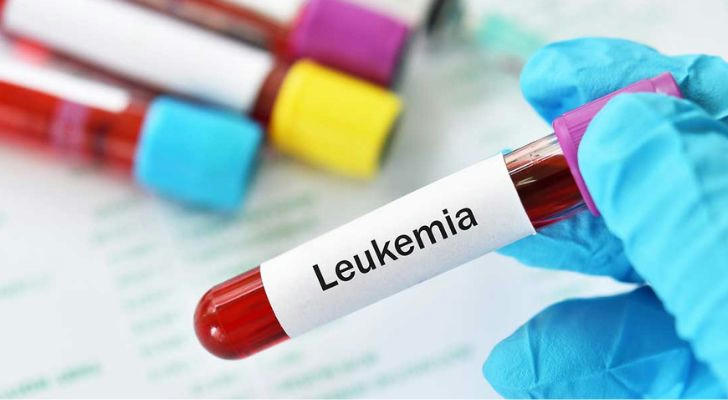Understanding Leukemia: Unmasking the Silent Killer and Empowering Prevention Strategies

Leukemia, often dubbed the "invisible enemy," is a relentless blood cancer that affects millions worldwide. While it remains a formidable foe, groundbreaking research and proactive measures are rewriting survival stories every day. This comprehensive guide arms you with knowledge to recognize warning signs, adopt preventive strategies, and navigate treatment options with confidence.
The Leukemia Landscape: A Stealthy Invader
What is leukemia?
Unlike solid tumors, leukemia originates in bone marrow—the blood factory of the body. Abnormal white blood cells multiply uncontrollably, crowding out healthy cells and crippling immune function. There are four main types:
- Acute Lymphoblastic Leukemia (ALL): Most common in children
- Acute Myeloid Leukemia (AML): Aggressive and fast-progressing
- Chronic Lymphocytic Leukemia (CLL): Often diagnosed in older adults
- Chronic Myeloid Leukemia (CML): Linked to genetic mutations
How does it unfold?
Healthy bone marrow produces stem cells that mature into red blood cells (oxygen transport), platelets (clotting), and white blood cells (infection-fighting). In leukemia, genetic mutations hijack this process, creating rogue cells that don't die when they should. Over time, these malignant cells flood the bloodstream, infiltrating organs and causing systemic failure.

Decoding the Warning Signs: Know the Red Flags
Early detection can be lifesaving. Watch for these persistent symptoms:
- Unexplained Fatigue: Feeling drained despite adequate sleep
- Frequent Infections: Recurring fevers, colds, or flu-like symptoms
- Bleeding/Bruising: Nosebleeds, bleeding gums, or pinpoint bruises
- Bone/Joint Pain: Sharp pains in sternum or limbs
- Swollen Lymph Nodes: Painless lumps in neck, armpits, or groin
- Weight Loss/Appetite Loss: Rapid, unexplained changes
- Night Sweats: Drenching sweats disrupting sleep
"I thought I was just run-down," shares leukemia survivor Maria Gonzalez. "Turns out those 'harmless' bruises were my body screaming for help."
Unmasking Hidden Risks: What Elevates Your Odds?
While genetics play a role, lifestyle factors significantly influence leukemia risk:
Genetic Predisposition
- Family history increases risk by 2-4x
- Certain inherited disorders (Down syndrome, Bloom syndrome)
Environmental Exposures
- Radiation: High doses (e.g., radiation therapy)
- Chemicals: Benzene (found in gasoline, industrial solvents)
- Smoking: Increases AML risk by 40%
Lifestyle Choices
- Obesity: Linked to chronic inflammation
- Pesticide exposure: Agricultural workers face higher rates
- Alcohol abuse: Damages bone marrow DNA

Proactive Measures: Building Your Defense Arsenal
Diet: Fueling Immune Resilience
- Cruciferous Vegetables: Broccoli, kale, cauliflower contain sulforaphane, shown to combat leukemia cells in lab studies
- Berries: Rich in antioxidants that neutralize free radicals
- Turmeric: Curcumin disrupts cancer cell signaling pathways
Exercise: Boosting Survival Odds
- Moderate exercise (30 mins/day) reduces treatment-related fatigue by 67%
- Yoga improves quality of life for leukemia patients undergoing chemo
Environmental Adjustments
- Install HEPA filters to reduce airborne carcinogens
- Opt for organic produce to minimize pesticide intake
- Test home radon levels annually
Diagnostic Breakthroughs: Seeing Beyond the Surface
Modern diagnostics offer unprecedented clarity:
- Flow Cytometry: Identifies cancer cells by surface markers
- PET/CT Scans: Detects hidden lesions with 95% accuracy
- Liquid Biopsy: Non-invasive blood test monitoring minimal residual disease
"We're now detecting leukemia at Stage 0 in some patients," marvels Dr. Raj Patel, leading oncologist. "That's game-changing."
Treatment Innovations: Beyond Traditional Chemo
The treatment landscape is evolving rapidly:
- CAR-T Therapy: Genetically engineered immune cells destroy cancer cells
- Targeted Therapies: Drugs like imatinib (Gleevec) block specific molecular pathways
- Stem Cell Transplants: Offers potential cure for advanced cases
"Precision medicine has turned leukemia into a manageable chronic condition for many," reports the Leukemia & Lymphoma Society.
Living with Leukemia: A Holistic Approach
Beyond medical interventions, holistic care is vital:
- Emotional Support: Joining support groups reduces anxiety by 40%
- Nutrition Counseling: Personalized meal plans aid recovery
- Integrative Therapies: Acupuncture alleviates nausea during chemo
"I credit my support network for giving me the strength to keep fighting," shares 12-year survivor David Lee.
The Road Ahead: Hope on the Horizon
Ongoing research promises even brighter futures:
- Gene Editing: CRISPR technology shows promise in correcting genetic mutations
- Immunotherapy Advances: Bispecific antibodies recruit immune cells to attack cancer
- Liquid Biopsy Evolution: Real-time monitoring of treatment response
When to Sound the Alarm
Seek immediate medical attention if you experience:
- Sudden difficulty breathing
- Uncontrollable bleeding
- Seizures or confusion
- Fever over 102°F persisting >24 hours
By understanding leukemia's complexities and embracing proactive strategies, we can transform fear into empowerment. Remember: Early detection + innovative treatments + unwavering resilience = hope. Stay vigilant, stay informed, and let's rewrite the leukemia narrative together.
